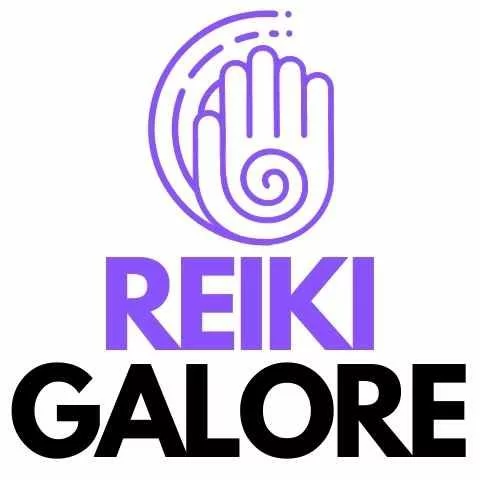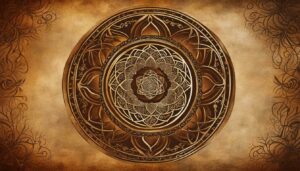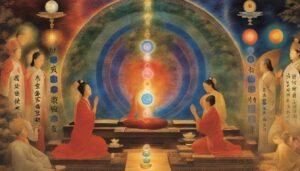Reiki’s timeline is a fascinating journey that spans over a century, tracing the development and evolution of this ancient healing modality.
Key Takeaways:
- Reiki’s history dates back to the early 1900s in Japan, with Mikao Usui developing his style of Reiki.
- Prior to Usui’s Reiki, there were already four other styles being practiced.
- Matiji Kawakami created the healing style Reiki Ryoho in 1914 and published a book about it in 1919.
- Usui Sensei had a mystical experience in 1922, leading to the development of Usui Reiki Ryoho.
- Hawayo Takata played a crucial role in popularizing Usui Reiki worldwide after World War II.
Throughout the years, Reiki has continued to evolve, with new methods and practices emerging to meet the diverse needs of practitioners and recipients. Holy Fire® Reiki, introduced by William Lee Rand in 2014, is an example of the ongoing evolution of this healing modality.
Understanding the timeline of Reiki’s development is essential for practitioners, as it deepens their connection to the modality and enhances their practice. By recognizing the historical milestones and the impact of Reiki’s lineage, practitioners can better appreciate the growth and significance of Reiki today.
Looking ahead, the future of Reiki holds exciting potential. While it is important to maintain the integrity of Reiki’s teachings, embracing innovation and advancements can further expand the reach and effectiveness of this healing modality.
Reiki’s timeline is not just a collection of dates and events; it is a testament to the power and enduring legacy of this ancient healing practice. As we explore the past, present, and future of Reiki, we gain a deeper appreciation for its transformative potential.
The Early Beginnings of Reiki
Before Reiki as we know it today, there were already several styles of healing being practiced, laying the foundation for the development of this powerful energy healing modality. These early beginnings of Reiki provide us with a fascinating glimpse into the origins and evolution of this ancient practice.
In the early 1900s in Japan, there were four different styles of healing that were being explored. These styles, while distinct in their own right, paved the way for the emergence of Reiki. Each style focused on harnessing and channeling energy for healing purposes, providing a framework upon which Reiki would later be built.
One of the key figures in the early development of Reiki was Matiji Kawakami. In 1914, he created a unique healing style known as Reiki Ryoho. This style emphasized the importance of energy flow and the use of hand placements for healing. Kawakami’s work laid the groundwork for further exploration and development of Reiki as a healing modality.
| Reiki’s Early Beginnings | Key Figures | Significance |
|---|---|---|
| Four styles of healing in Japan | Matiji Kawakami | Laying the foundation for Reiki’s development |
“Before Reiki as we know it today, there were already several styles of healing being practiced.”
The contributions made by these early pioneers set the stage for the emergence of Reiki as a distinct healing modality. Their dedication to understanding and harnessing energy for healing purposes laid the groundwork for the development and evolution of Reiki, shaping it into the practice we know and benefit from today.
As we explore the timeline of Reiki’s development, it becomes clear that its origins are deeply rooted in the rich history of healing practices that came before. By understanding and appreciating these early beginnings, we can gain a deeper appreciation for the transformative power of Reiki and its ongoing evolution.
Matiji Kawakami and the Emergence of Reiki Ryoho
Matiji Kawakami made significant strides in the development of Reiki by introducing his own healing style, Reiki Ryoho, and sharing his knowledge through his influential book. In 1914, Kawakami created Reiki Ryoho, a healing technique that incorporated elements of spiritual healing, meditation, and bodywork. He believed that by harmonizing the mind, body, and spirit, one could achieve optimal health and well-being.
Kawakami’s book, “Reiki Healing and Its Effects,” which was published in 1919, played a crucial role in spreading the knowledge of Reiki Ryoho. The book provided detailed instructions on how to practice Reiki Ryoho, including hand positions for self-treatment and treating others. It also explained the philosophy behind Reiki Ryoho and the benefits of its practice.
Kawakami’s contributions to the development of Reiki laid the foundation for future practitioners and teachers. His work not only expanded the understanding of Reiki as a healing modality but also paved the way for the evolution and growth of Reiki in the years to come.
| Year | Event |
|---|---|
| 1914 | Matiji Kawakami creates Reiki Ryoho, his own healing style. |
| 1919 | Kawakami publishes “Reiki Healing and Its Effects,” a book that outlines the practice of Reiki Ryoho. |
As we explore the timeline of Reiki, it is important to recognize the significant contributions of Matiji Kawakami. His introduction of Reiki Ryoho and the publication of his book have shaped the development and understanding of Reiki as a holistic healing modality. To this day, practitioners and teachers continue to draw inspiration and guidance from Kawakami’s teachings, promoting the growth and evolution of Reiki as a powerful and transformative practice.
Usui Sensei and the Birth of Usui Reiki Ryoho
Usui Sensei’s transformative experience led to the birth of Usui Reiki Ryoho, a unique healing system that continues to shape the practice of Reiki today. In March 1922, during a meditation retreat on Mount Kurama, Usui Sensei received a mystical revelation that bestowed him with the gift of Reiki energy. This profound encounter marked the beginning of a new era in Reiki’s development.
The Usui Reiki Ryoho system emphasized spiritual growth and self-healing. Usui Sensei believed that healing should not be limited to physical ailments, but also encompass emotional, mental, and spiritual aspects. His teachings emphasized the importance of connecting with the universal life force energy to restore balance and harmony within oneself and others.
“Reiki Ryoho is an original method based on the intuitive sense of the individual endowed with Reiki and the spirit of self-improvement and self-care of Usui Sensei” – Matiji Kawakami
Usui Reiki Ryoho gained popularity in Japan, and in 1923, a devastating earthquake struck Tokyo and other surrounding areas. Usui Sensei and his students provided healing and relief to those affected, further solidifying the practice’s efficacy. However, it wasn’t until Hawayo Takata, a Japanese-American woman, introduced Usui Reiki to the Western world that its influence spread globally.
| Year | Key Event |
|---|---|
| 1922 | Usui Sensei receives the Reiki energy during a mystical experience. |
| 1923 | An earthquake in Tokyo showcases the healing power of Usui Reiki Ryoho. |
| 1940s | Hawayo Takata introduces Usui Reiki to the Western world. |
The birth of Usui Reiki Ryoho marked a turning point in the evolution of Reiki. With its emphasis on self-care, spiritual growth, and universal life force energy, Usui Reiki Ryoho set the foundation for the various Reiki methods and practices that emerged later. Today, practitioners continue to honor and uphold the principles of Usui Reiki, ensuring the integrity and effectiveness of this profound healing modality.
Hawayo Takata and Reiki’s Global Expansion
Hawayo Takata played a pivotal role in the global expansion of Reiki, introducing this transformative healing modality to individuals around the world. Born in 1900 in Hawaii, she became the first Reiki master to bring Usui Reiki to the Western hemisphere. After receiving treatments herself, Takata traveled to Japan in 1935 to learn Reiki from Chujiro Hayashi, one of Usui Sensei’s students. Inspired by her own healing journey, Takata dedicated her life to spreading Reiki’s teachings to others.
Takata’s efforts were instrumental in establishing Reiki clinics and training centers in the United States, Canada, and other countries. She trained 22 Reiki masters and encouraged them to continue the lineage by teaching and attuning others. Takata emphasized the importance of integrity and respect for Reiki’s traditional teachings, ensuring that the practice was passed down authentically.
| Hawayo Takata’s Contributions: | Impact on Reiki’s Globalization: |
|---|---|
| Established Reiki clinics and training centers | Allowed individuals worldwide access to Reiki |
| Trained 22 Reiki masters | Continued the lineage by teaching and attuning others |
| Emphasized integrity and respect for traditional teachings | Preserved the authenticity of Reiki practice |
Takata’s efforts were met with great success, and Reiki became widely recognized as a powerful healing modality. Today, her legacy lives on through the countless practitioners she trained, as well as the millions of people around the world who have experienced the profound benefits of Reiki.
The Continuing Evolution of Reiki
As Reiki gained popularity and recognition, it underwent a continuous evolution, giving rise to different methods and practices that catered to the ever-growing community of Reiki enthusiasts. This evolution was driven by a desire to explore new ways of harnessing the healing energy of Reiki and to meet the unique needs and preferences of practitioners and recipients.
One of the key aspects of Reiki’s evolution is the emergence of various Reiki methods. These methods offer practitioners different approaches to channeling and working with the energy. Some methods focus on specific hand positions or symbols, while others incorporate additional healing techniques or spiritual practices. The diversity of Reiki methods allows individuals to find a style that resonates with them and aligns with their personal beliefs and healing goals.
Another notable development in the evolution of Reiki is the expansion of the Reiki practice beyond hands-on healing. While traditional Reiki involves the laying on of hands to transmit healing energy, practitioners have explored new ways to incorporate Reiki into their lives and communities. This has led to the integration of Reiki into other healing modalities, such as massage therapy, acupuncture, and energy work. It has also prompted the exploration of distance healing, where Reiki energy is sent remotely to individuals who are not physically present.
The evolution of Reiki has also been influenced by the growing emphasis on self-care and personal development. Many practitioners now incorporate Reiki into their daily routine as a tool for self-healing and spiritual growth. This includes practicing self-Reiki, where individuals use their own hands to channel the healing energy to themselves. Additionally, Reiki classes and workshops often include teachings on meditation, mindfulness, and other practices that support overall well-being.
| Reiki Evolution | Key Aspects |
|---|---|
| Various Reiki Methods | Offering different approaches to channeling and working with Reiki energy. |
| Expansion of Reiki Practice | Integrating Reiki into other healing modalities and exploring distance healing. |
| Emphasis on Self-Care | Incorporating Reiki into daily routines and using it for personal healing and growth. |
Overall, the continuing evolution of Reiki reflects the dynamic nature of this healing modality. It highlights the willingness of practitioners to explore new possibilities and adapt the practice to meet the changing needs of individuals and society. As Reiki continues to evolve, it remains deeply rooted in its core principles of promoting balance, harmony, and well-being.
Introducing Holy Fire® Reiki
In 2014, William Lee Rand introduced Holy Fire® Reiki, a transformative energy system that has gained recognition for its powerful healing abilities. Holy Fire® Reiki is a modern evolution of the traditional Usui Reiki system, bringing forth a higher frequency of spiritual energy for healing and personal growth.
What sets Holy Fire® Reiki apart is its unique qualities, which practitioners have described as being more refined, gentle, and effective in promoting healing on all levels – physical, emotional, mental, and spiritual. It is known for its ability to release deep-seated emotional blockages, promote deep relaxation, and provide a sense of profound peace and well-being.
With Holy Fire® Reiki, practitioners are attuned to the energy of Holy Fire®, which is believed to be a powerful, spiritually guided energy that originates from a higher source. This energy works in harmony with the practitioner’s intention, allowing for a deeper connection to the healing energy and enhancing the overall healing experience for both the practitioner and the recipient.
| Benefits of Holy Fire® Reiki | How it differs from traditional Usui Reiki |
|---|---|
| Deep emotional healing | Higher frequency energy |
| Enhanced intuition and spiritual growth | Refined and more effective healing |
| Relaxation and stress reduction | Gentle and powerful healing abilities |
As the timeline of Reiki continues to evolve, Holy Fire® Reiki stands as a testament to the ongoing development and innovation within the Reiki community. With its transformative and powerful healing abilities, Holy Fire® Reiki has become a popular choice for practitioners seeking to deepen their healing practice and unlock new levels of spiritual growth.
Reiki’s Timeline in Perspective
Looking back at Reiki’s timeline, it becomes evident that this ancient healing practice has undergone remarkable development, adapting to the changing needs and beliefs of individuals seeking healing and balance. From its early beginnings to its global expansion, Reiki has continuously evolved, paving the way for various styles and methods.
At the turn of the 20th century, Matiji Kawakami introduced Reiki Ryoho, a healing style that laid the foundation for future developments. His book, “Reiki Healing and Its Effects,” published in 1919, brought wider recognition to the practice. Then, in 1922, Mikao Usui experienced a profound mystical encounter, leading to the birth of Usui Reiki Ryoho. Usui’s teachings and principles continue to influence Reiki practitioners worldwide.
Hawayo Takata played a significant role in spreading Reiki across the globe after World War II. Her efforts in establishing Reiki clinics and training practitioners in the United States and other countries helped popularize Usui Reiki on an international scale. This expansion opened doors for further exploration and innovation.
In recent years, William Lee Rand introduced Holy Fire® Reiki, adding a new dimension to the evolution of Reiki. This advancement was met with enthusiasm within the Reiki community, providing practitioners with new techniques and experiences.
| Reiki’s Timeline Overview | Reiki development | Reiki evolution |
|---|---|---|
| Early Beginnings | Origins of Reiki | Adapting to changing needs |
| Matiji Kawakami and Reiki Ryoho | Contribution to Reiki | Foundation for future developments |
| Usui Sensei and Usui Reiki Ryoho | Birth of Usui Reiki | Influence on Reiki practitioners |
| Hawayo Takata and Global Expansion | Spreading Reiki worldwide | Opening doors for exploration |
| The Introduction of Holy Fire® Reiki | Advancement in Reiki | Adding new techniques and experiences |
Reiki’s timeline showcases the growth and significance of this healing modality. Understanding its history provides practitioners with a deeper connection to Reiki and enhances their practice. As we move forward, it is crucial to preserve the integrity of Reiki’s teachings while embracing innovation, ensuring its continued relevance and effectiveness in the years to come.
The Impact of Reiki’s Timeline
A deep dive into Reiki’s timeline provides practitioners with a deeper appreciation of the practice and its historical context, enriching their understanding and enhancing their Reiki journey. By exploring the history of Reiki, we gain insights into the evolution and development of this powerful healing modality.
Understanding the origins of Reiki and the different styles that emerged before Mikao Usui’s groundbreaking work allows us to honor the lineage and traditions that have shaped Reiki over the years. It also offers us a broader perspective on the diverse approaches to healing that existed during that time, laying the foundation for the principles and techniques we utilize today.
As we delve further into Reiki’s timeline, we discover the pivotal role played by Matiji Kawakami, who introduced Reiki Ryoho in 1914. His contributions and teachings, documented in his book “Reiki Healing and Its Effects,” have influenced Reiki practitioners worldwide. Similarly, the mystical experience of Usui Sensei in 1922, which led to the development of Usui Reiki Ryoho, marked a significant turning point in Reiki’s history and continues to shape its practice today.
Since then, Reiki has expanded globally, thanks to the efforts of Hawayo Takata. Her dedication in spreading Usui Reiki after World War II has allowed many individuals to experience the transformative power of Reiki on a global scale. This expansion and accessibility have opened doors for countless individuals to explore Reiki, deepening their practice and benefiting from its healing energy.
The continuing evolution of Reiki is a testament to its adaptability and relevance in modern times. Practitioners have developed various methods and techniques that cater to different needs and preferences, ensuring that Reiki remains accessible and beneficial to a diverse range of individuals. The introduction of Holy Fire® Reiki in 2014 by William Lee Rand is an example of this ongoing evolution, bringing new qualities and perspectives to the Reiki community.
By appreciating the journey of Reiki and its evolution, practitioners gain a greater understanding of its potency and the impact it can have on their own lives and the lives of others. A deep understanding of Reiki’s timeline allows practitioners to honor tradition while also embracing innovation, ensuring the continued growth and relevance of Reiki as a powerful healing modality.
The Future of Reiki
As we look towards the future, Reiki’s timeline provides a foundation for ongoing development and growth, ensuring that this transformative healing modality continues to thrive in a rapidly changing world. The history of Reiki is a testament to its resilience and adaptability, with each era bringing new advancements and evolutions to the practice.
One exciting development in recent years is the introduction of Holy Fire® Reiki in 2014 by William Lee Rand. Holy Fire® Reiki has gained popularity for its unique qualities, including a more powerful and refined energy that enhances the healing experience. It has quickly become a sought-after style of Reiki, with practitioners and recipients alike experiencing profound transformations.
In addition to the emergence of Holy Fire® Reiki, there has been a diversification of Reiki methods and practices. Today, Reiki practitioners have a wide range of choices, including traditional Usui Reiki, Karuna Reiki®, and various other styles that incorporate different techniques and approaches. This diversity allows individuals to find the Reiki practice that resonates most with them, deepening their connection to the energy and expanding the possibilities for healing.
The Future of Reiki
Looking ahead, the future of Reiki holds immense potential for growth and innovation. As more research is conducted on the benefits of Reiki, there may be further integration of Reiki into mainstream healthcare systems, leading to greater acceptance and utilization of this healing modality. Additionally, advancements in technology may open up new avenues for distance healing, making Reiki more accessible to people around the world.
Throughout its timeline, Reiki has consistently demonstrated its ability to evolve and adapt to the changing needs of individuals and society. As we continue to explore the possibilities of energy healing, Reiki will undoubtedly continue to evolve and expand its impact on the world. By embracing both the traditional roots and the ongoing developments, we can ensure that Reiki remains a powerful tool for healing and personal growth in the years to come.
| Advancements in Reiki | The Future of Reiki |
|---|---|
| Introduction of Holy Fire® Reiki | Research on the benefits of Reiki |
| Diversification of Reiki methods and practices | Integration of Reiki into mainstream healthcare systems |
| Enhancements in technology for distance healing | Expansion of Reiki’s impact worldwide |
Conclusion
Reiki’s timeline offers a captivating narrative of its historical development, revealing a profound journey of evolution that has shaped the practice of Reiki as we know it today.
From its early beginnings in the early 1900s in Japan, where four other styles of healing were already in practice, to the creation of Reiki Ryoho by Matiji Kawakami in 1914, the history of Reiki is rich and diverse. Kawakami’s publication of “Reiki Healing and Its Effects” in 1919 provided further insight into the healing modality.
However, it was Usui Sensei’s mystical experience in March 1922 that truly transformed Reiki. With the receiving of the Reiki energy and the development of Usui Reiki Ryoho, the practice gained momentum and eventually reached a global scale, thanks to the efforts of Hawayo Takata after World War II.
Today, Reiki continues to evolve, with new methods and styles emerging to meet the diverse needs and preferences of practitioners and recipients. One significant development is the introduction of Holy Fire® Reiki in 2014 by William Lee Rand, which has brought about unique qualities and characteristics to the Reiki community.
The history of Reiki’s timeline provides us with a deeper understanding of its growth, development, and evolution. By appreciating the journey it has taken, practitioners can strengthen their connection to this healing modality and enhance their practice. As we look towards the future of Reiki, we must maintain the integrity of its teachings while embracing innovation, ensuring that Reiki continues to thrive and positively impact the lives of many.
Source Links
- https://www.reiki.org/faqs/what-history-reiki
- https://www.georgianamoncktonreiki.com/the-history-of-reiki.php
- https://reikiwanderlust.com/the-evolution-of-reiki/




